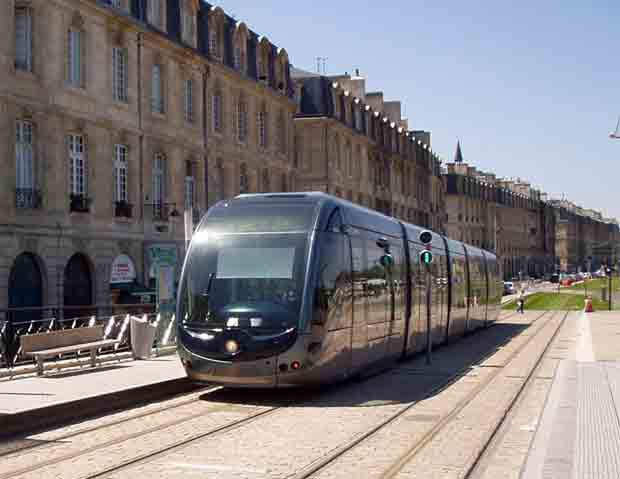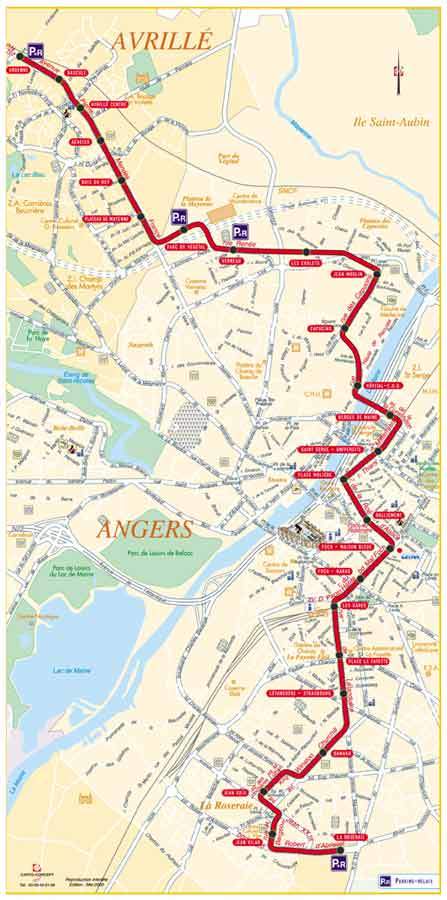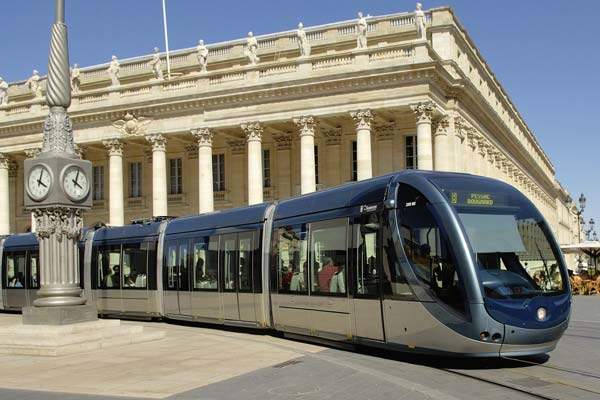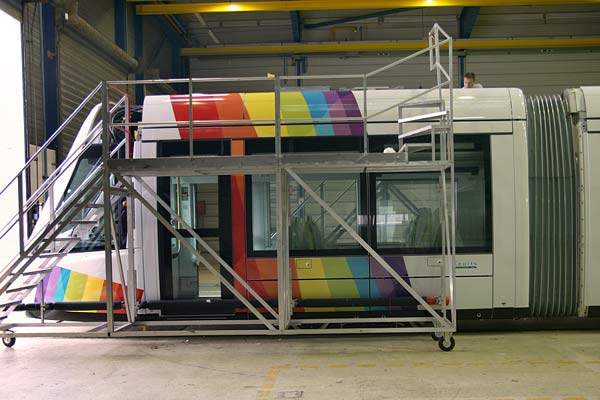Like the Valenciennes system opened in 2007, Angers in the Pays de la Loire region of north western France is indicative of a movement for relatively small cities to build new or expand remnants of urban light rail. Strongly encouraged by national government and with a growing perception that status gravitates to places that have a distinctive modern tramway, France in particular illustrates revival in this field.
The project
In common with the majority of French systems, the Angers ‘Avrillé-La Roseraie’ line (also ‘Le tramway angevin’) is routed to serve large generators of journeys such as hospitals, universities, housing developments and the main SNCF station. This route was initially planned to serve a third of the modest 158,500 population of Angers (although that of the metropolitan area is much larger), with 57,000 residents and 21,000 jobs located within 400m of the line. The project takes account of future urban expansion and redevelopment within the Angers-Avrillé communities adjoining the route.
The provisional cost of the light rail project is €248m. Funding is from regional authorities, the French state and the European Community. The sponsoring authority is Angers Loire Métropole and the service operator is Keolis using as a brand the acronym Cotra. The system will initially consist of one 12km (7.5 mile) line, which crosses the city from north to south.
Infrastructure
Like many other French cities, trams are making a return to Angers, rather than being entirely new. The original system dated back to 1886 and at its height covered 25km, with eight lines. It was completely closed by 1949.
The new system uses twin 1,435mm (standard gauge) tracks mostly with a 750V DC overhead power supply, as with other French second-generation tramways. The entire route is built on reserved trams-only trackbed and 70% of the route is to be grassed over, giving it an attractive appearance and helping to dampen noise.
The most distinctive component will be the use of Alstom’s Alimentation Par le Sol (APS) – ground power supply – which avoids the need to install obstructive overhead line equipment on selected streets. This technology was pioneered over 14km on the Bordeaux three line network opened in 2003. Angers is likely to be the second such application to become operational. It is also specified as a partial application for the forthcoming Reims and Orléans systems in France and will be fitted throughout on the Dubai Al Safooh light rail project due for operation in 2014.
Using APS, power is supplied via a third rail positioned centrally between the running lines. It is made up of 8m-long sections separated by 3m long insulating sections, with energy supplied to the rail by underground boxes every 22m.
The electricity is collected using two friction contactors located in the middle of the tram. To ensure safety-coded radio signals between tram and ground ensures power is only sent to the rail segment of rail when the tram is overhead. Two sections of the Angers line are to be catenary free.
The biggest single engineering feature is the new 271m crossing of the River Maine in the city centre. This bow-string bridge will have provision for cycles and pedestrians, but not motor traffic except emergency vehicles.
To fit in with the narrow streets in central Angers, there is a 300m bi-directional single line along the Rue de la Roe, which is 9.6m wide.
To encourage transfer from cars to trams, five park and ride sites are planned. Bus routes will be reorganised to feed the tramway and to avoid service duplication.
Rolling stock
The contract for 17 APS-equipped bi-directional Citadis type 302 trams was signed in November 2006. Being turned out in a similar livery to the city’s bus fleet, the five-module 100% low-floor 32m units were built at Alstom’s La Rochelle plant.
Alstom supplied the first Angevin tramset in December 2009. In February 2011, the 17th tramset was delivered to the maintenance centre. Initial projections were for 15 trams required to provide a peak six minute interval service running at a service speed of 20km/h, with the route being covered in around 37 minutes. A substantial maintenance facility occupies over 16,400m² for a nine-track depot, overhaul centre both for trams and permanent way vehicles.
Signalling and communications
CCTV surveillance has been installed in the tram fleet to protect passengers, even though Angers is generally seen as a safe city. Line of sight principles will apply, signalling based around existing road junctions; with trams receiving priority at all times to ensure that schedules are maintained. The control centre is at the depot.
The future
A route for a second line has been devised, running east to west across the city with an overlap with line 1 in the centre.











